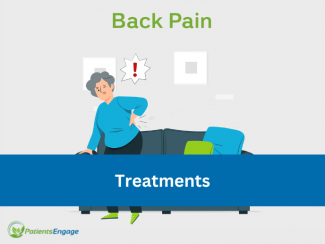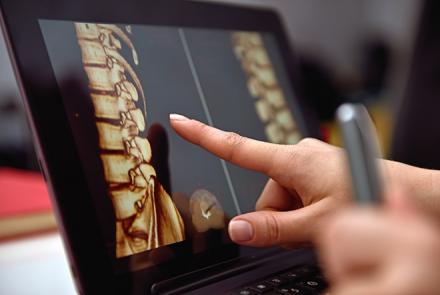Over 600 million worldwide suffered from back pain in 2020, 10% of the global population. This number is expected to grow to over 800 million by 2050 according to a Lancet report.
Back pain is also a significant contributor to societal and economic burden and a growing issue in Asia and Africa. Let us understand it better and work towards preventing this condition.

Treatment options for back pain range from medications that provide temporary relief to disease modifying medications for chronic conditions to surgical treatments for certain causes. Here are a list of a few options for treating back pain.
Note: The diagnosis determine the optimal combination of treatment
Medications:
- Muscle relaxants which help with muscle sprains and chronic back pain.
- Steroid injectables or numbing injections may be given by the doctor for longstanding pain and issues like pain from nerve compression/irritation.
- Neuro-modulatory medications may be used in some cases that act by changing the way the nerves system process pain.
- Some prescription grade (stronger) pain killers may be advised depending on the discretion of the doctor for severe cases.
- Disease Modifying medications for conditions like rheumatoid arthrtis.
Surgical Treatments
These are measures taken when back pain is not relieved by medications and physiotherapy and is incapacitating or affecting the daily life of a patient.
- Laminectomy: Surgical removal of the bone walls and bony spurs from the vertebrae in order to help relieve strain on the nerves.
- Discectomy and microdiscectomy: Remove a portion of a herniated disc to relieve pressure on the spinal canal or a nerve root.
- Spinal fusion: Helps to treat degenerative disc disease and spondylolisthesis by joining two or more vertebrae in the spine that have slipped from their normal position.
- Foraminotomy: Used to clean and widens the area where the nerve roots pass through the spinal canal thus reducing the pressure on the nerves.
- Disc replacement surgery: The damaged disc is replaced by a synthetic one.
- Laser surgery: Used to relieve pressure on nerves.
- Radiofrequency: Uses heat created by radio waves to target specific nerves that shuts the nerves' ability to send pain signals temporarily.
- Spinal cord stimulation: Used when other treatments have failed. Uses a small, implanted device to deliver mild electrical impulses to the spinal cord to relieve chronic pain.
Complementary treatments:
These are best done only after discussing with the treating doctor and under guidance of experts:
- Transcutaneous electrical nerve stimulation (TENS) sends mild electrical pulses to the nerves through a device and electrodes or pads that are placed on the skin.
- Acupuncture is a Chinese practice that uses thin needles that may relieve pain in some patients.
Some pain may also go away when the root cause is treated - for example certain cancers related
Questions to ask your doctor about your back pain:
- The probable cause of your back pain?
- Any tests that are needed to diagnose the cause?
- What treatment options are recommended, like medication, physical therapy, or lifestyle changes?
- How long and how often can you take pain killers for your back pain?
- Potential side effects of any medications being prescribed to you?
- How can I manage my pain at home?
- What are the dangerous signs and symptoms that should warrant immediate medical attention?
- Is stress contributing to your pain?
- If you have been recommended surgery, what are potential benefits and risks associated with the surgery?
To read more about patient experiences with back pain see here.
To read about patient experience of travel related back pain see here.
Changed
16/Aug/2025
Condition

















